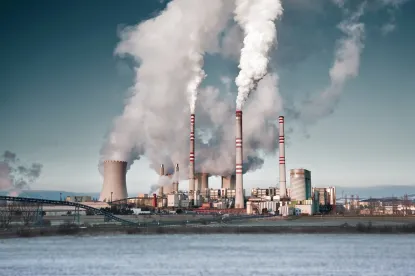Key Takeaways
-
What: In late January, EPA took the initial step of posting status reports on 25 facilities previously identified as high-risk based on known ethylene oxide (EO) emissions and facility location. EPA has committed to making community notifications regarding EO risks by May 31, 2021. On February 22, 2021, the EPA’s Office of the Inspector General (OIG) sent a letter to Acting Administrator Jane Nishida urging reconsideration of Administrator Wheeler’s January 4, 2021 decision that community outreach and notification regarding EO risks need not be immediate. Reconsideration could trigger community outreach on a shorter timeline and trigger concomitant community concerns (and, potentially, litigation) regarding EO.
-
Who's Affected? The 25 facilities for which EPA prepared a report. More broadly, all facilities that emit EO, including commercial sterilizers, EO producers, miscellaneous organic chemical manufacturers, hospital EO sterilizers, polyether polyols producers, and synthetic organic chemical manufacturers.
-
What Should I Do? Prepare now to mitigate potential enforcement and litigation risk. Develop a strategy to reduce risk by prioritizing facilities in high-risk communities, identifying potential actions to reduce EO emissions, and addressing environmental justice concerns.
Background
As earlier reported, last March the Office of the Inspector General (OIG) called for EPA to issue health-related warnings to residents living near 25 “high-priority” EO-emitting facilities across the country. OIG identified the facilities using the 2014 National Air Toxics Assessment (NATA), updated in 2018 to incorporate the controversial EO IRIS risk assessment. EPA developed the NATA to screen for elevated cancer risks from air pollutants, including EO.
On May 15, 2020, EPA’s Office of Air and Radiation (OAR) pushed back on the OIG request, arguing that the NATA is a screening tool only, with inherent uncertainties. OAR reasoned that before community notifications could occur, additional technical analysis and coordination with state environmental agencies was necessary.
In its August 19, 2020 response, OIG strongly disagreed, demanding that OAR make immediate notifications while during preparations of additional study. On December 2, OAR proposed a corrective action plan, committing to notification deadlines by May 31, 2021. Ultimately, the intra-agency dispute was mediated before Administrator Wheeler, who sided with OAR.
Recent Developments
Despite this apparent resolution, in late-January, EPA quietly posted status reports on the first wave of 25 “high risk facilities” identified on its website page devoted to EO measures. EPA claimed the reports were posted “in part, in response to the EPA Office of Inspector General’s March 31, 2020, Management Alert.”
At this time, the facility reports are akin to status updates and provide information on the additional technical reviews, actions to date, and ongoing or planned community outreach. The reports do not include emissions data or updated risk characterizations for the facilities.
Separately, on February 22, 2021, the OIG sent a letter to Acting Administrator Jane Nishida urging reconsideration of Administrator Wheeler’s decision that community-specific notification was not necessary. In part, the OIG asserts that Administrator Wheeler’s decision was based on information not previously disclosed to the OIG.
While the immediate significance of notification are unknown and would not appear to have immediate enforcement consequences, the NATA and the EO IRIS risk assessment are already ample fodder for lawsuits by states and the plaintiffs’ bar against EO emitters. EPA’s anticipated notifications this spring (or sooner if EPA reconsiders OIG’s request) could prompt enhanced scrutiny, particularly if they provide additional emissions data or define community cancer risks.
Next Steps
Affected companies should get ahead of the issue now to manage the risks posed by EO litigation and enforcement cases. Given the EPA’s current activities and increased attention from a new administration, now is the time to assess and mitigate company risk in a holistic, proactive, and community-inclusive manner.
Companies should consider conducting a privileged assessment in order to receive legal advice on risk mitigation. The assessment would comprise of an expert review of EO processes to identify EO stack emissions and fugitive emissions points; evaluating whether readily available equipment upgrades could reduce EO emissions, including fugitive emissions; assessing whether there are any operations in or near an environmental justice community and determining whether additional engagement with the community and other stakeholders is needed; analyzing, under privilege, all compliance monitoring data submitted to agencies, to determine how those data may be viewed in a litigation or enforcement context; and concluding with a proactive litigation strategy that reduces risk.
*** Updated on February 26, 2021 to include the OIG’s letter to Acting Administrator Jane Nishida requesting a reconsideration of Administrator Wheeler’s decision to reject their recommendation. ***







 />i
/>i

